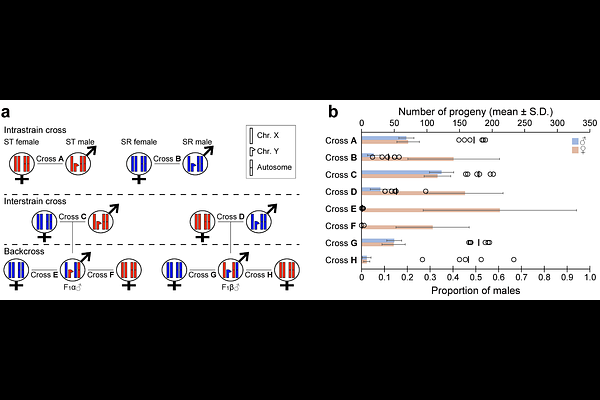Disentangling sex-ratio meiotic drive in Drosophila a century after its original discovery

Disentangling sex-ratio meiotic drive in Drosophila a century after its original discovery
Katoh, T. K.; Chen, Y.; Takatori, N.; Nozawa, M.
AbstractSex ratio is distorted when selfish elements linked to the sex chromosome cause meiotic drive. Since the first report on the drive in Drosophila obscura in 1928, this phenomenon has been reported in diverse taxa. However, the molecular and evolutionary mechanisms of the drive have remained largely elusive, even in D. obscura. We therefore reinvestigated this original example by comparing D. obscura strains with and without distortion (SR and ST strains, respectively). Crossing experiments indicated the presence of a driver on the X chromosome and predicted the existence of a suppressor. Using comparative genomics, we identified an X-linked gene, Gcna, as a candidate driver; the region encoding the SprT-like domain of this gene was massively duplicated only in the SR genome. We further identified a candidate suppressor, miR-9c, that interacted with Gcna in the SR strain but not with that in the ST strain. Gcna with amplified SprT-like domains likely targets transient TOP2-DPC on the Y chromosome and may disrupt or kill sperm harboring the Y chromosome; this was supported by the small number of sperm in the SR strain. Our findings demonstrate an evolutionary arms race between driver and suppressor genes in a longstanding example of sex-ratio meiotic drive.